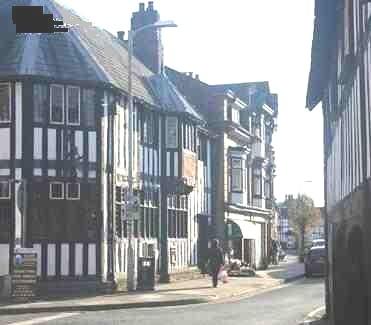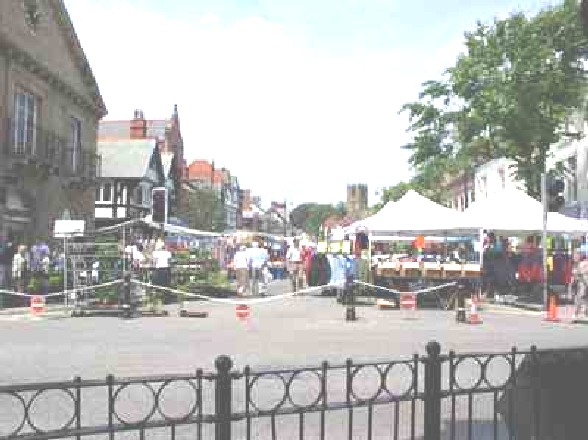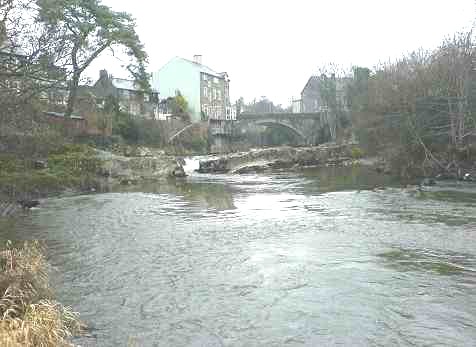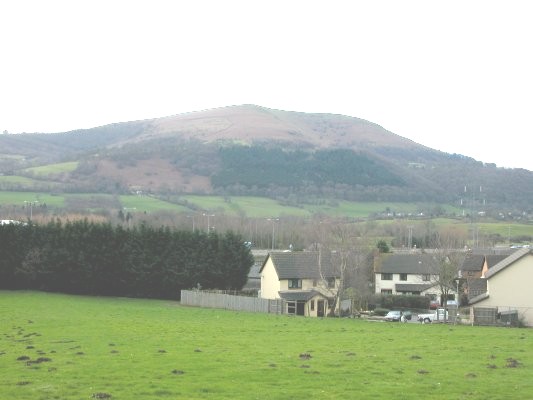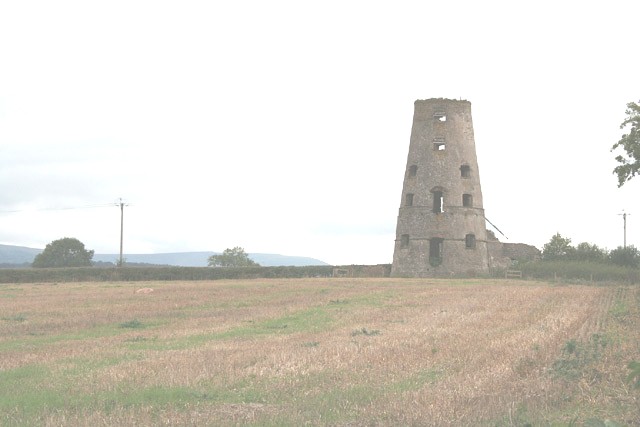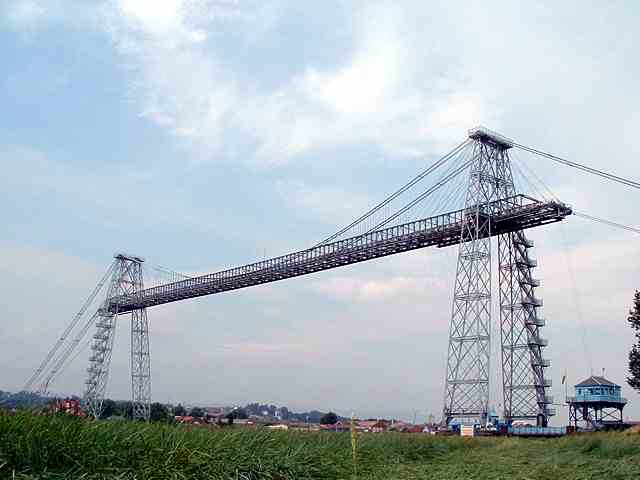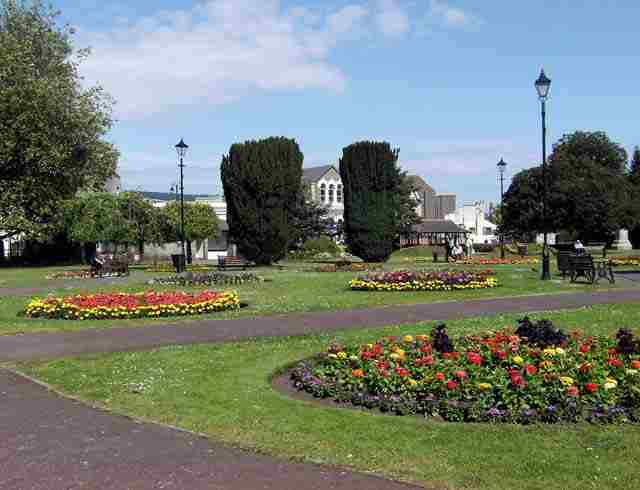Writings of H P Blavatsky

Theosophy House
206 Newport Road, Cardiff, Wales, UK. CF24
-1DL

Helena Petrovna
Blavatsky (1831 – 1891)
The Founder of
Modern Theosophy
A Case Of Obsession
By
H P Blavatsky
The particulars of
the case of "obsession," alluded to in the April number of this
magazine, are given in the following letter from a respectable English medical
man who is in attendance upon the victim:–
I take the liberty
of addressing you in the cause of humanity, with the intention of exciting your
sympathies and obtaining all the aid in your power to afford, in a case of
"control." You will understand that the gentleman is being made a
medium against his wish, through having attended a few séances for the purpose
of witnessing "materialization."
Ever since, he has
been more or less subject to a series of persecutions by the
"controlling" spirit and, in spite of every effort of his to throw
off the influence, he has been made to suffer most shamefully and painfully in
very many ways and under most trying and aggravating circumstances, especially
by his thoughts being forced into forbidden channels without external causes
being present – the bodily functions overruled, even being caused to bite his
tongue and cheeks severely whilst eating, &c., and subjected to every
species of petty annoyances which will serve as a means for the
"control" (unknown) to sustain and establish the connection. The
details are in their most painful features not such as I can write to you; but
if there be any means known to you whereby the influence can be diverted, and
it is thought necessary to be more particular in my description of this case, I
will send you all the information I possess.
So little is known
in India of the latest and most startling phase of Western mediumistic
phenomena – "materialization," – that a few words of explanation are
needed to make this case understood. Briefly, then, for several years, in the
presence of certain mediums in America and Europe, there have been seen, often
under good test conditions, apparitions of the dead, which in every respect
seem like living human beings. They walk about, write messages to present and
absent friends, speak audibly in the languages familiar to them in life, even
though the medium may be unacquainted with them, and are dressed in the garb they
wore when alive. Many cases of fraudulent personation of the dead have been
detected, pretended mediums have sometimes gone on for years deceiving the
credulous, and real ones, whose psychical powers have been apparently proved
beyond doubt, have been caught playing tricks in some evil hour when they have
yielded to either the love of money or notoriety. Still, making every allowance
for all these, there is a residuum of veritable cases of the materialization,
or the making visible, tangible and audible of portrait figures of dead people.
These wonderful phenomena have been variously regarded by investigators. Most
Spiritualists have looked upon them as the most precious proofs of the
soul-survival; while Theosophists, acquainted with the views of the ancient
Theurgists, and the still more ancient Aryan philosophers, have viewed them as
at best misleading deceptions of the senses, fraught with danger to the
physical and moral natures of both medium and spectator – if the latter chances
to be susceptible to certain psychical influences. These students of Occultism
have noticed that the mediums for materializations have too often been ruined
in health by the drain upon their systems, and wrecked in morals. They have
over and again warned the Spiritualistic public that mediumship was a most
dangerous gift, one only to be tolerated under great precautions. And for this
they have received much abuse and few thanks. Still one's duty must be done at
every cost, and the case now before us affords a valuable text for one more bit
of friendly counsel.
We need not stop to
discuss the question whether the so-called materialized forms above described
are or are not those of the deceased they look like. That may be held in
reserve until the bottom facts of Oriental psychical science are better
understood. Nor need we argue as to whether there has ever been an authentic
materialization. The London experiences of Mr. William Crookes, F.R.S., and the
American ones of Colonel Olcott, both so widely known and of so convincing a
character, give us a sufficient basis of fact to argue upon. We assume the
reality of materializations, and shall take the instance cited by the English
physician as a subject for diagnosis.
The patient then is
described as having been "controlled" since attending
"circles" where there were materializations, and as having become the
bond-slave of some evil powers which force him to say and do painful and even
disgusting things, despite his resistance. Why is this? How can a man be
compelled to so act against his will? What is Obsession? Three brief questions
these are, but most difficult to explain to an uninitiated public. The laws of
Obsession can only be well understood by him who has sounded the depths of
Indian philosophy. The only clue to the secret, which the West possesses, is
contained in that most beneficent science, Magnetism or Mesmerism. That does
teach the existence of a vital fluid within and about the human being; the fact
of different human polarities; and the possibility of one person projecting
this fluid or force at will, to and upon another person differently polarized.
Baron Reichenbach's theory of Odyle or Odic force shows us the existence of
this same fluid in the mineral and vegetable as well as the animal kingdoms. To
complete the chain of evidence, Buchanan's discovery of the psychometrical
faculty in man enables us to prove, by the help of this faculty, that a subtle
influence is exerted by people upon the houses and even the localities they
live in, the paper they write upon, the clothing they wear, the portion of the
Universal Ether (the Aryan Akása) they exist in – and that this is a permanent
influence, perceptible even at the most distant epochs from the time when the
individual lived and exerted this influence. In one word, we may say that the
discoveries of Western science corroborate most fully the hints thrown out by
Greek sages and the more defined theories of certain Indian philosophers.
Indians and
Buddhists believe alike that thought and deed are both material, that they
survive, that the evil desires and the good ones of a man environ him in a
world of his own making, that these desires and thoughts take on shapes that
become real to him after death, and that Moksha. in the one case, and Nirvana,
in the other, cannot be attained until the disembodied soul has passed quite
through this shadow-world of the haunting thoughts, and become divested of the
last spot of its earthly taint. The progress of Western discovery in this
direction has been and must ever be very gradual. From the phenomena of gross
to those of more sublimated matter, and thence on towards the mysteries of
spirit is the hard road made necessary by the precepts of Aristotle. Western
Science first ascertained that our outcoming breath is charged with carbonic
acid and, in excess, becomes fatal to human life; then, that certain dangerous
diseases are passed from person to person in the sporules thrown off into the
air from the sick body; then, that man projects upon every body and every thing
he encounters a magnetic aura, peculiar to himself; and, finally, the physical
disturbance set up in the Ether in the process of thought-evolution is now
postulated. Another step in advance will be to realize the magical creative
power of the human mind, and the fact that moral taint is just as transmissible
as physical. The "influence" of bad companions will then be
understood to imply a degrading personal magnetism, more subtle than the
impressions conveyed to the eye or the ear by the sights and sounds of a vicious
company. The latter may be repelled by resolutely avoiding to see or hear what
is bad; but the former enwraps the sensitive and penetrates his very being if
he but stop where the moral poison is floating in the air. Gregory's
"Animal Magnetism," Reichenbach's "Researches," and
Denton's "Soul of Things" will make much of this plain to the Western
inquirer, though neither of those authors traces the connection of his
favourite branch of science with the parent-stock – Indian Psychology.
Keeping the present
case in view, we see a man highly susceptible to magnetic impressions, ignorant
of the nature of the "materializations" and, therefore, unable to
protect himself against bad influences, brought in contact with promiscuous
circles where the impressionable medium has long been the unwitting nucleus of
evil magnetisms, his system saturated with the emanations of the surviving
thoughts and desires of those who are living and those who are dead. The reader
is referred to an interesting paper by Judge Gadgil of Baroda (see our December
number), on "Hindu Ideas about Communion with the Dead," for a plain
exposition of this question of earth-tied souls, or Pisachas. "It is
considered," says that writer, "that in this state, the soul, being
deprived of the means of enjoyment of sensual pleasures through its own
physical body, is perpetually tormented by hunger, appetite and other bodily
desires, and can have only vicarious enjoyment by entering into the living
physical bodies of others, or by absorbing the subtlest essences of libations
and oblations offered for their own sake." What is there to surprise us in
the fact that a negatively polarized man, a man of a susceptible temperament,
being suddenly brought into a current of foul emanations from some vicious
person, perhaps still living or perhaps dead, absorbes the insidious poison as
rapidly as quicklime does moisture, until he is saturated with it? Thus, a
susceptible body will absorb the virus of small-pox, or cholera, or typhus, and
we need only recall this to draw the analogy which Occult Science affirms to be
warranted.
Near the Earth's
surface there hangs over us – to use a convenient simile – a steamy moral fog,
composed of the undispersed exhalations of human vice and passion. This fog
penetrates the sensitive to the very soul's core; his psychic self absorbs it
as the sponge does water, or as fresh milk effluvia. It benumbs his moral
sense, spurs his baser instincts into activity, overpowers his good
resolutions. As the fumes of a wine-vault make the brain reel or as the
choke-damp stifles one's breath in a mine, so this heavy cloud of immoral
influences carries away the sensitive beyond the limits of self-control, and he
becomes "obsessed," like our English patient.
What remedy is
there to suggest? Does not our very diagnosis indicate that? The sensitive must
have his sensitiveness destroyed; the negative polarity must be changed to a
positive; he must become active instead of passive. He can be helped by a
magnetiser who understands the nature of obsession, and who is morally pure and
physically healthy; it must be a powerful magnetiser, a man of commanding
will-force. But the fight for freedom will, after all, have to be fought by the
patient himself. His will-power must be aroused. He must expel the poison from
his system. Inch by inch he must win back the lost ground. He must realize that
it is a question of life or death, salvation or ruin, and strive for victory,
like one who makes a last and heroic effort to save his life. His diet must be
of the simplest, he must neither eat animal food, nor touch any stimulant, nor
put himself in any company where there is the smallest chance for unclean
thoughts to be provoked. He should be alone as little as possible, but his
companions should be carefully chosen. He should take exercise and be much in
the open air; use wood-fire, instead of coals. Every indication that the bad
influence was still working within him should be taken as a challenge to
control his thoughts and compel them to dwell upon pure, elevating, spiritual
things, at every hazard and with a determination to suffer anything rather than
give way. If this man can have such a spirit infused into him, and his
physician can secure the benevolent help of a strong, healthy magnetiser, of pure
character, he may be saved. A case almost exactly like this one, except that
the patient was a lady, came under our notice in America; the same advice as
the above was given and followed, and the obsessing "devil" was
driven out and has been kept out ever since.
Theosophist, May, 1880
H. P. Blavatsky
______________________

Cardiff Theosophical Society in
Theosophy House
206 Newport Road, Cardiff, Wales, UK. CF24
-1DL
Find out more about
Theosophy with these links

The Cardiff Theosophical Society Website
The
National Wales Theosophy Website
If you run a Theosophy Group, please feel free
to use any of the material on this site
The Most Basic Theosophy
Website in the Universe
A quick overview of Theosophy
and the Theosophical Society
If you run a Theosophy Group you
can use this as an introductory handout.
Theosophy Cardiff’s Instant Guide
One liners and quick explanations
H P Blavatsky is usually
the only
Theosophist that
most people have ever
heard of. Let’s
put that right
The Voice of the Silence Website
An Independent Theosophical Republic
Links to Free Online Theosophy
Study Resources; Courses, Writings,
The main criteria
for the inclusion of
links on this
site is that they have some
relationship
(however tenuous) to Theosophy
and are lightweight,
amusing or entertaining.
Topics include
Quantum Theory and Socks,
Dick Dastardly and Legendary Blues Singers.
A selection of
articles on Reincarnation
Provided in
response to the large
number of
enquiries we receive at
Cardiff
Theosophical Society on this subject
The Voice of the Silence Website
This is for
everyone, you don’t have to live
in Wales to make
good use of this Website
No Aardvarks were harmed in the
The Spiritual Home of Urban Theosophy
The Earth Base for Evolutionary Theosophy
A B C D EFG H IJ KL M N OP QR S T UV WXYZ
Complete Theosophical Glossary in Plain Text Format
1.22MB
________________
Index of
Articles by
By
H P Blavatsky
Elementals A Land of Mystery A Case Of Obsession
Devachan
Reincarnation
The Mind in Nature
Elementaries
Fakirs and Tables
Is the Desire to Live Selfish?
A Paradoxical World An Astral Prophet
Ancient Magic in Modern Science
A Year of Theosophy Can The Mahatmas Be Selfish?
Chelas and Lay Chelas Nightmare Tales “My Books”
Dialogue On The Mysteries Of The After Life
"Esoteric Buddhism" And The "Secret Doctrine"
Have Animals Souls The Kabalah and the Kabalists
Babel Of Modern Thought Thoughts on the Elementals
Precepts Compiled by H P Blavatsky
Obras
Por H P Blavatsky
En
Espanol
¿Es la Teosofía una Religión? La Clave de la Teosofía
Articles
about the Life of H P Blavatsky
H P Blavatsky
the Light-Bringer
by
Geoffrey A Barborka
The Blavatsky Lecture of 1970
________________
Preface
Theosophy and the Masters General Principles
The Earth Chain Body and Astral Body Kama – Desire
Manas Of Reincarnation Reincarnation Continued
Karma Kama Loka
Devachan
Cycles
Arguments Supporting Reincarnation
Differentiation Of Species Missing Links
Psychic Laws, Forces, and Phenomena
Psychic Phenomena and Spiritualism
Quick Explanations with Links to More Detailed Info
What is Theosophy ? Theosophy Defined (More Detail)
Three Fundamental Propositions Key Concepts of Theosophy
Cosmogenesis Anthropogenesis Root Races
Ascended Masters After Death States
The Seven Principles of Man Karma
Reincarnation Helena Petrovna Blavatsky
Colonel Henry Steel Olcott William Quan Judge
The Start of the Theosophical
Society
History of the Theosophical
Society
Theosophical Society Presidents
History of the Theosophical
Society in Wales
The Three Objectives of the
Theosophical Society
Explanation of the Theosophical
Society Emblem
The Theosophical Order of
Service (TOS)
Glossaries of Theosophical Terms
Index of Searchable
Full Text Versions of
Definitive
Theosophical Works
H P Blavatsky’s Secret Doctrine
Isis Unveiled by H P Blavatsky
H P Blavatsky’s Esoteric Glossary
Mahatma Letters to A P Sinnett 1 - 25
A Modern Revival of Ancient Wisdom
(Selection of Articles by H P Blavatsky)
The Secret Doctrine – Volume 3
A compilation of H P Blavatsky’s
writings published after her death
Esoteric Christianity or the Lesser Mysteries
The Early Teachings of The Masters
A Collection of Fugitive Fragments
Fundamentals of the Esoteric Philosophy
Mystical,
Philosophical, Theosophical, Historical
and Scientific
Essays Selected from "The Theosophist"
Edited by George Robert Stow Mead
From Talks on the Path of Occultism - Vol. II
In the Twilight”
Series of Articles
The In the Twilight”
series appeared during
1898 in The
Theosophical Review and
from 1909-1913 in The Theosophist.
compiled from
information supplied by
her relatives and friends and edited by A P Sinnett
Letters and
Talks on Theosophy and the Theosophical Life
Obras Teosoficas En Espanol
Theosophische Schriften Auf Deutsch
An Outstanding
Introduction to Theosophy
By a student of
Katherine Tingley
Elementary Theosophy Who is the Man? Body and Soul
Body, Soul and Spirit Reincarnation Karma
Guide to the
Theosophy
Arthur draws the Sword from the Stone
The Knights of The Round Table
The Roman Amphitheatre at Caerleon,
Eamont Bridge, Nr Penrith, Cumbria, England.
Geoffrey of Monmouth
(History of the Kings of Britain)
The reliabilty of this work has long been a subject of
debate but it is the first definitive account of Arthur’s
Reign
and one which puts Arthur in a historcal context.
and his version’s political agenda
According to Geoffrey of Monmouth
The first written mention of Arthur as a heroic figure
The British leader who fought twelve battles
King Arthur’s ninth victory at
The Battle of the City of the Legion
King Arthur ambushes an advancing Saxon
army then defeats them at Liddington Castle,
Badbury, Near Swindon, Wiltshire, England.
King Arthur’s twelfth and last victory against the Saxons
Traditionally Arthur’s last battle in which he was
mortally wounded although his side went on to win
No contemporary writings or accounts of his life
but he is placed 50 to 100 years after the accepted
King Arthur period. He refers to Arthur in his inspiring
poems but the earliest written record of these dates
from over three hundred years after Taliesin’s death.
Pendragon Castle
Mallerstang Valley, Nr Kirkby Stephen,
A 12th Century Norman ruin on the site of what is
reputed to have been a stronghold of Uther Pendragon
From
wise child with no earthly father to
Megastar
of Arthurian Legend
History of the Kings of Britain
Drawn from the Stone or received from the Lady of the Lake.
Sir Thomas Malory’s Le Morte d’Arthur has both versions
with both swords called Excalibur. Other versions
5th & 6th Century Timeline of Britain
From the departure of the Romans from
Britain to the establishment of sizeable
Anglo-Saxon Kingdoms
Glossary of
Arthur’s uncle:- The puppet ruler of the Britons
controlled and eventually killed by Vortigern
Amesbury, Wiltshire, England. Circa 450CE
An alleged massacre of Celtic Nobility by the Saxons
History of the Kings of Britain
Athrwys / Arthrwys
King of Ergyng
Circa 618 - 655 CE
Latin: Artorius; English: Arthur
A warrior King born in Gwent and associated with
Caerleon, a possible Camelot. Although over 100 years
later that the accepted Arthur period, the exploits of
Athrwys may have contributed to the King Arthur Legend.
He became King of Ergyng, a kingdom between
Gwent and Brycheiniog (Brecon)
Angles under Ida seized the Celtic Kingdom of
Bernaccia in North East England in 547 CE forcing
Although much later than the accepted King Arthur
period, the events of Morgan Bulc’s 50 year campaign
to regain his kingdom may have contributed to
Old Welsh: Guorthigirn;
Anglo-Saxon: Wyrtgeorn;
Breton: Gurthiern; Modern Welsh; Gwrtheyrn;
*********************************
An earlier ruler than King Arthur and not a heroic figure.
He is credited with policies that weakened Celtic Britain
to a point from which it never recovered.
Although there are no contemporary accounts of
his rule, there is more written evidence for his
existence than of King Arthur.
How Sir Lancelot slew two giants,
From Sir Thomas Malory’s Le Morte d’Arthur
How Sir Lancelot rode disguised
in Sir Kay's harness, and how he
From Sir Thomas Malory’s Le Morte d’Arthur
How Sir Lancelot jousted against
four knights of the Round Table,
From Sir Thomas Malory’s Le Morte d’Arthur
Try these if you are looking for a local
Theosophy Group or Centre
UK Listing of Theosophical Groups
Cardiff Theosophical Society in
Theosophy House
206 Newport Road, Cardiff, Wales, UK. CF24
-1DL
Wales Picture Gallery
Bala
Brecon
Pembroke
Llanidloes
Mold Market
Rhayader
Barmouth
Barmouth
Blorenge
Mountain near Abergavenny
Castle Bank
Hill Fort, Radnorshire
Cynwyd Youth
Hostel
The Harvest
Moon Centre, Holyhead
Hay on Wye
Knighton
Llancayo
Windmill near Usk
A Nant Y
These were
built by the ironmasters in the early
1800s to
protect themselves against worker revolts.
Tintern Abbey
Usk
Monmouth
Cardiff
Theosophical Society in Wales
Cardiff, Wales, UK. CF24 – 1DL
_____________________________
Cardiff Picture Gallery
Cardiff
Millennium Stadium
The Hayes Cafe
Outside Cardiff Castle Circa 1890
Church Street
Cardiff View
Royal
The Original
Norman Castle which stands inside
the Grounds of
the later
Inside the
Grounds at
Cardiff Street
Entertainment
Cardiff Indoor
Market
All
Wales Guide to Theosophy Instant Guide to
Theosophy
Theosophy
Wales Hornet Theosophy Wales Now
Cardiff
Theosophical Archive Elementary Theosophy
Basic
Theosophy Theosophy in Cardiff
Theosophy in Wales Hey Look! Theosophy in
Cardiff
Streetwise Theosophy Grand
Tour
Theosophy
Aardvark Theosophy
Starts Here
Theosophy 206 Biography of William Q Judge
Theosophy Cardiff’s Face Book of Great Theosophists
Theosophy Evolution Theosophy Generally Stated
Biography of Helena Petrovna
Blavatsky
Cardiff
Theosophical Society in Wales






